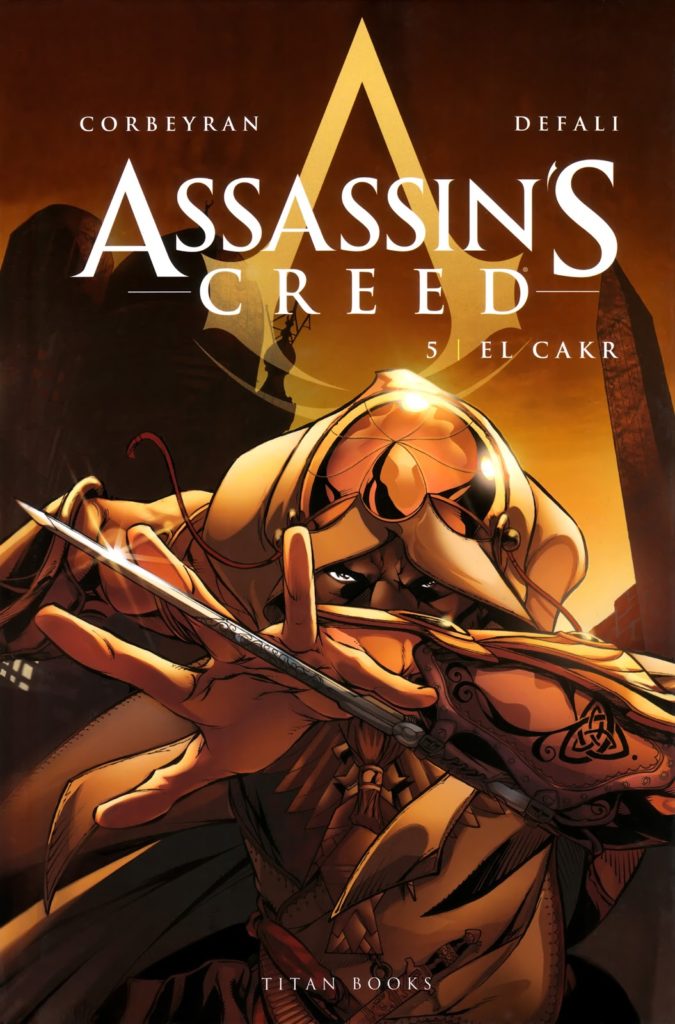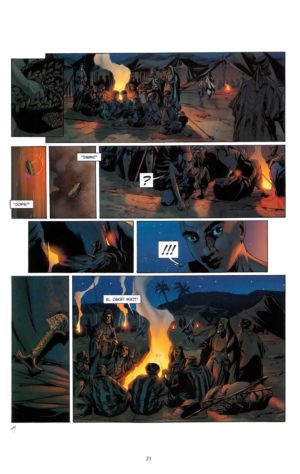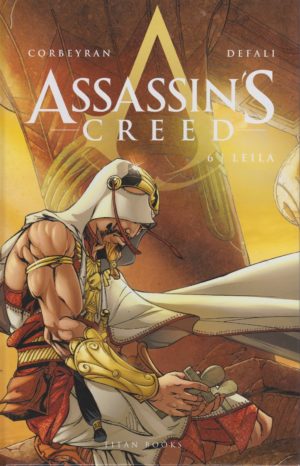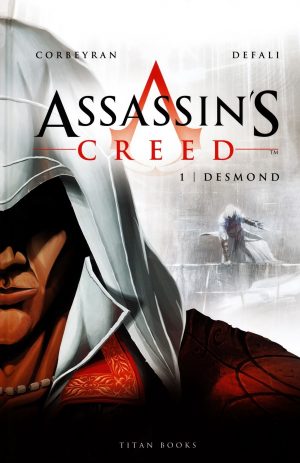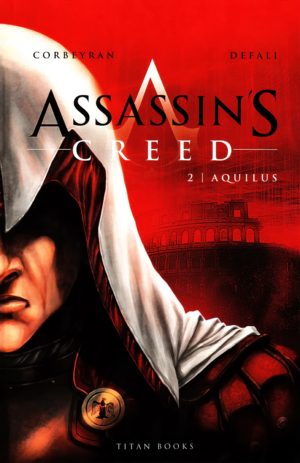Review by Ian Keogh
El Cakr is one of the Assassin ancestors of present day operative Jonathan Hawk, operating in fourteenth century Egypt. As seen to end Hawk, Jonathan of that name is currently indisposed, so Eric Corbeyran starts the story with the Templars, and a few pages of cryptic, stilted dialogue before shifting to 1341.
There’s an artificiality to Corbeyran’s writing that constantly pulls back the screen revealing the process, whether it’s the dialogue intended to explain to readers or the obvious way he teases with the scene switches. His plots move beyond what’s credible, even in a fantasy world, an astounding coincidence regarding a shard from a dagger’s hilt used for a second consecutive story, and any time he attempts to initiate personal relationships it’s clumsy. All that undermines the good aspects of his plotting, and he’s come up with an inventive twist on the Animus machine that enables people to connect with the lives of their ancestors. It’s simultaneously sinister and opens the door to multiple story possibilities, while connecting well to a seemingly random robbery in Hawk, but is explained over three pages in such an extended dry fashion that Corbeyran again sabotages the good in his work.
Djilalli Defali would still prefer to draw scenery and technology than people, but he’s developed into a tidy action artist in the European style. His scenes of the Arabic world are decorative and detailed, and when Corbeyran switches to action rather than explaining, Defali brings that to life also. Some of his people are still a little stiff and pinched, but that’s disguised to an extent by the strong sense of design used to lay out the pages.
By the conclusion, El Cakr has met Leila in the past, with the continuation named after her, and in the present day the Templars look to have taken a leap beyond the Assassins. It’s enough to draw readers onward. Alternatively, Hawk, El Cakr and Leila are collected as a bulkier hardcover in Assassin’s Creed: The Hawk Trilogy.
